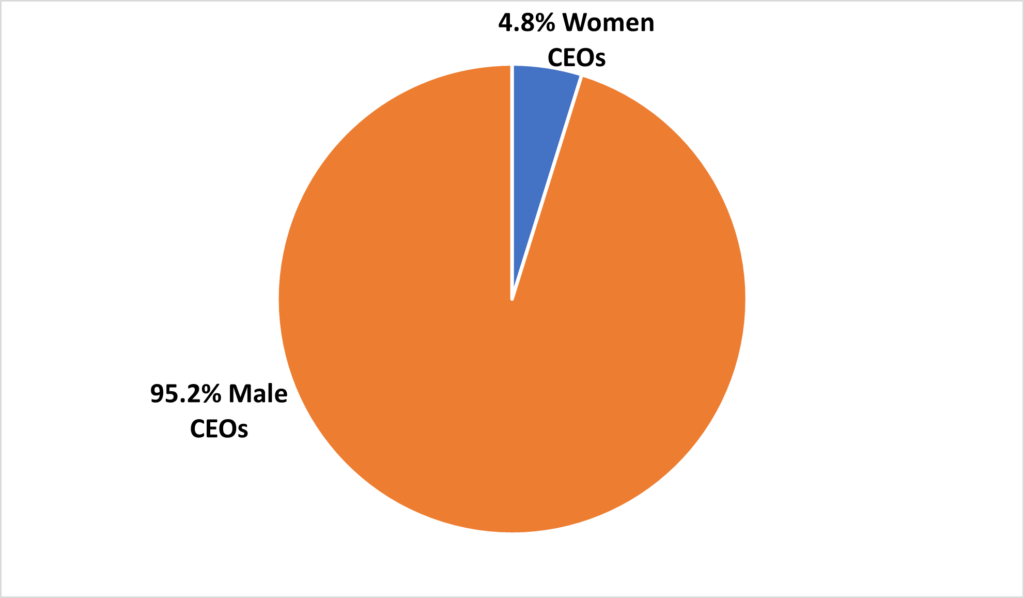Companies with women CEOs make a huge difference for other female executives as it means those firms tend to have significantly more women in leadership roles and on the board, confirmed a new global study released by Corporate Women Directors International (CWDI).
The survey of around 3,000 companies in 55 countries found that companies with a woman CEO tend to have more women board directors; 34.1% women-held board seats compared to 23.3% for companies with a male CEO. Additionally, the percentage of women board directors increased following the appointment of a woman CEO, which suggests they are instrumental in opening the doors for more women to enter C-suite and board roles. In fact, the average percentage of women’s board representation prior to a woman being named CEO was 21.9% compared to the current percentage of 34.1%.
These findings held true for all parts of the world, confirmed the study. In each region – North America, Europe, Africa, Asia-Pacific and Latin America – the average percentage of women board directors and executive officers of companies with a woman CEO is higher than companies led by a man.
However, women only account 4.8% of CEOs of the 2,944 companies, confirmed the study. “Still too few women have reached the CEO level of the largest companies in each country,” stated CWDI Chair Irene Natividad. “But what is clear is that women at the top are a plus for women, whether the company is headquartered in Bangkok, London, Nairobi or California. Increasing gender diversity on the board and in senior management may not have been a primary goal when these women became CEOs, but it is nonetheless their impact.”

BEST-PERFORMING WOMEN LED COMPANIES
In CWDIs ‘Top 10’ list of best-performing women-led companies, Swedish retailer Hennes & Mauritz, better known as H&M, ranked first with 2/3 of its board (8 of 12) comprised of women. DNB ASA, Norway’s largest financial services group, New Zealand’s Spark NZ Ltd, US automaker General Motors, Sweden’s Svenska Handelsbanken, US aerospace and defense company Northrup Grumman and Belgium’s Solvay all have over 50% women on their Boards of Directors. Amongst companies with the highest percentage of women Executive Officers, the best performer is SSI Group, based in the Philippines; which has four of five executive positions held by women (80%).
The report also found that the increase in women’s leadership roles in companies with women CEOs happened upon their appointment, instead of following a trend that may have already existed with their predecessors. Following being named CEO, these women-led companies increased their percentage of women board directors from 21.9% at the time of appointment to 34.1% at the beginning of 2021; and their percentage of women executive officers from 24% to 36.4%.
COUNTRIES WITH HIGHEST PERCENTAGE OF WOMEN CEOS
However, looking back at CWDI’s 2011 Report on women CEOs, which echoed current patterns previously indicated, there has been little increase in the number of women at the top. In the past decade, the percentage of women CEOs has only climbed slightly, from 3.8% in 2011 to 4.8% in 2021. Countries with the highest percentage of women CEOs are the US (8.1%), Singapore (8%), Australia (7%) and Thailand (7%); while countries with few or none among their largest companies at the start of 2021 included China, Japan and Germany.
“It is well-known through dozens of studies that women-led companies have positive impact on a company’s bottom line,” said Natividad. “So, given that women at the top are good for workers, customers, and shareholders, why aren’t more companies placing more women in CEO roles? Clearly, companies need to proactively commit to speeding up the pipeline of women corporate leaders to achieve future growth.”

ACCELERATING WOMEN CEOS
Solutions to accelerating the number of women reaching CEO roles include structured mentorship or sponsorship programmes enabling high potential women to be visible to senior leaders and guided in navigating the pathway to the C-suite; assignment of women to revenue-generating line assignments; and policies such as paid family leave for female and male employees, so women can reduce career gaps tied to family-related responsibilities.
Since 1996, CWDI, a non-profit organisation based in Washington DC, has provided baseline data on women directors in different countries, regions and industries. Its 2021 report, Women CEOs: Opening Doors to Boards and C-Suites, is its 33rd report to date. Click here for more information.








































